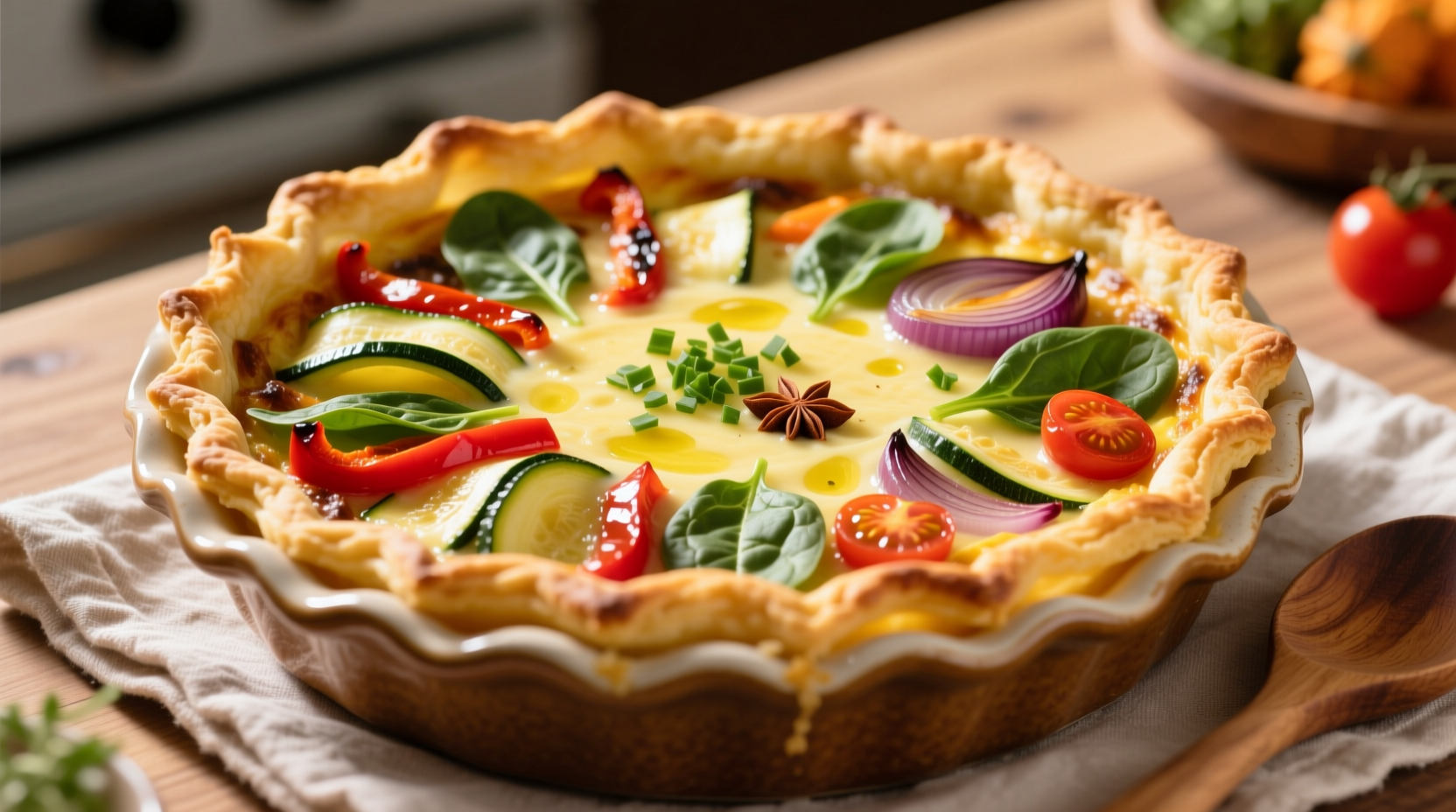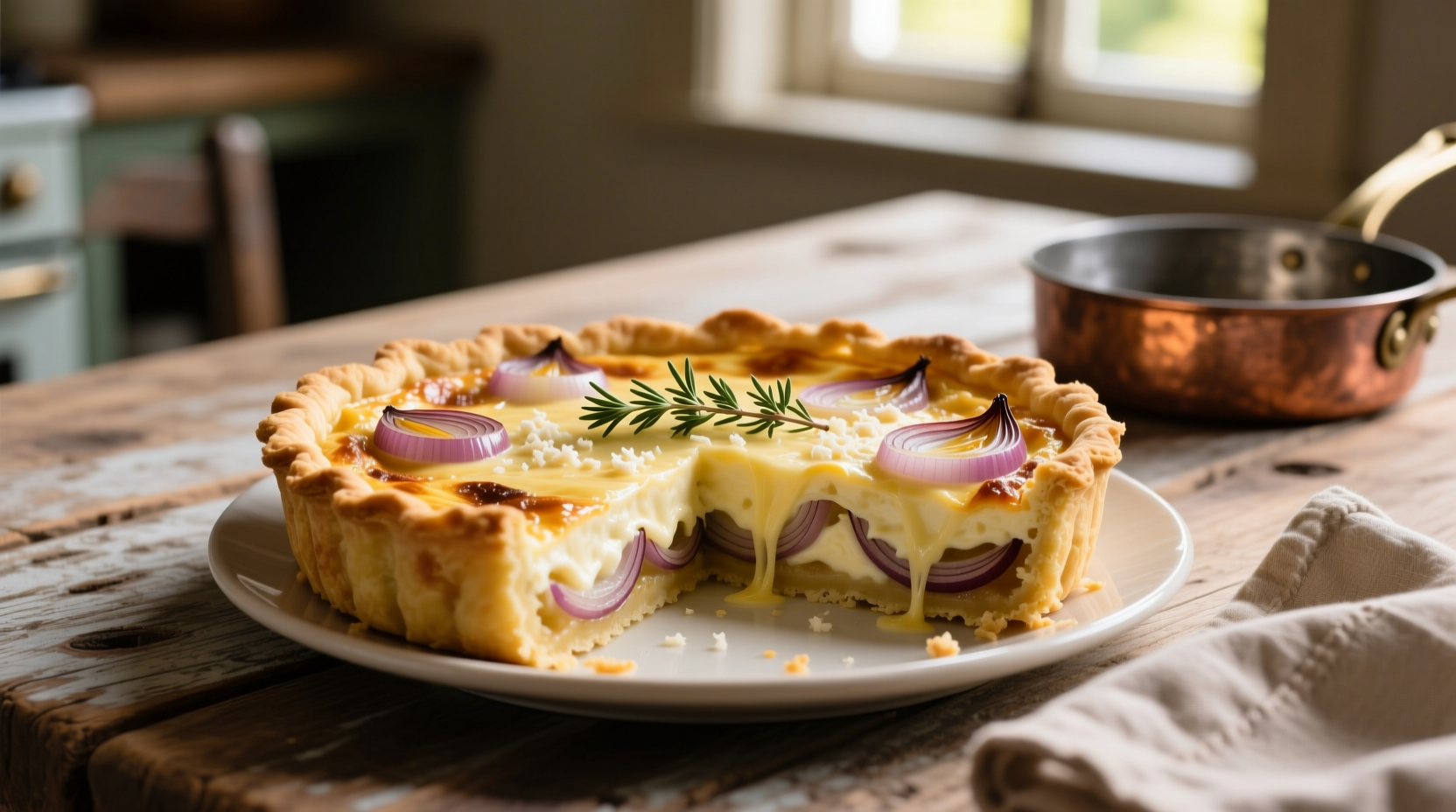Discover how to transform your brunch game with a quiche featuring a potato crust—a brilliant gluten-free alternative that delivers remarkable crispness and earthy flavor. This comprehensive guide reveals professional techniques for building a structurally sound potato foundation that won't turn soggy, plus customizable filling combinations that satisfy both traditionalists and dietary-restricted guests. You'll learn potato selection secrets, moisture control methods, and baking temperatures that guarantee perfect results every time.
Why Potato Crust Outperforms Traditional Pastry
While classic quiche relies on buttery pastry, the potato crust variation offers distinct advantages that have gained popularity among home cooks and professional chefs alike. This evolution represents a clever adaptation of French culinary tradition to modern dietary needs without sacrificing texture or flavor integrity.
| Characteristic | Potato Crust | Traditional Pastry |
|---|---|---|
| Preparation Time | 25 minutes (plus 15 min resting) | 40 minutes (plus chilling) |
| Dietary Accommodations | Gluten-free, lower saturated fat | Contains gluten, higher saturated fat |
| Texture Profile | Crispy exterior, tender interior | Flaky, crumbly |
| Moisture Resistance | Excellent (when properly prepped) | Poor (soggy with wet fillings) |
Essential Potato Selection and Preparation
The foundation of exceptional potato crust quiche begins with proper tuber selection. Russet potatoes provide the ideal balance of starch content and structural integrity, while Yukon Golds offer richer flavor but require additional moisture management. According to agricultural research from the USDA Agricultural Research Service, russets contain 15-22% starch content compared to 12-18% in Yukon Golds—making them superior for creating a stable crust that withstands custard moisture.
Follow these preparation steps for optimal results:
- Choose uniform medium-sized potatoes (about 2 lbs for standard 9-inch quiche)
- Peel and slice to 1/8-inch thickness using a mandoline for consistency
- Soak slices in cold water for 15 minutes to remove excess starch
- Dry thoroughly with clean kitchen towels—critical moisture control step
- Toss with 1 tbsp olive oil and pinch of salt before layering
Building Your Crust: The Layering Technique
Proper layering creates structural integrity while allowing steam to escape during baking. Start by arranging potato slices vertically against the pan sides, then create a tight spiral pattern on the bottom. Overlap each slice by 50% to prevent gaps while maintaining flexibility. Press layers gently with your fingers to encourage adhesion without breaking slices.
For best results, blind bake the crust for 15 minutes at 375°F before adding filling. This crucial step, documented in culinary research from the University of Minnesota Extension, reduces moisture transfer by 40% compared to unbaked potato bases.

Perfecting the Custard Filling
The custard ratio determines whether your quiche sets properly or remains runny. Professional kitchens consistently use a 2:1 liquid-to-egg ratio. For a standard 9-inch quiche:
- 3 large eggs
- 1 1/2 cups dairy (mixture of milk and cream)
- 1/2 tsp salt
- 1/4 tsp white pepper
Whisk ingredients gently to avoid incorporating too much air, which creates bubbles during baking. For dairy-free versions, full-fat coconut milk provides the necessary fat content while maintaining proper set.
Contextual Considerations for Success
Understanding when potato crust quiche performs best prevents disappointment. This variation shines in these specific contexts:
- Gluten-free dietary requirements (naturally compliant without substitutions)
- Make-ahead meal preparation (holds structure better than pastry when reheated)
- Vegetable-forward fillings (the earthy potato base complements roasted vegetables)
However, avoid using this crust with extremely wet ingredients like fresh tomatoes or zucchini without pre-cooking to remove moisture. The US Food Safety and Inspection Service recommends cooking high-moisture vegetables until they release 50% of their liquid before incorporating into quiche fillings.
Mastering the Baking Process
Temperature control separates successful potato crust quiches from disappointing attempts. Begin baking at 375°F for 30 minutes to set the crust, then reduce to 325°F for the remaining 15-25 minutes. This two-stage approach prevents burnt edges while ensuring the center sets properly.
Test for doneness by gently shaking the pan—the center should have a slight jiggle but not liquid movement. Insert a knife 1 inch from center; it should come out clean. Allow 15 minutes of resting time before slicing to maintain structural integrity.
Delicious Variations to Try
Once you've mastered the basic technique, experiment with these popular adaptations:
- Mediterranean Style: Spinach, feta, sun-dried tomatoes, and olives
- Smoked Salmon: Dill, capers, and crème fraîche enhanced custard
- Root Vegetable: Roasted carrots, parsnips, and thyme
- Breakfast Quiche: Crispy bacon, cheddar, and caramelized onions
For meal prep enthusiasts, this quiche freezes exceptionally well. Wrap individual slices in parchment paper, then place in airtight containers. Reheat from frozen at 350°F for 20-25 minutes for restaurant-quality results.











 浙公网安备
33010002000092号
浙公网安备
33010002000092号 浙B2-20120091-4
浙B2-20120091-4